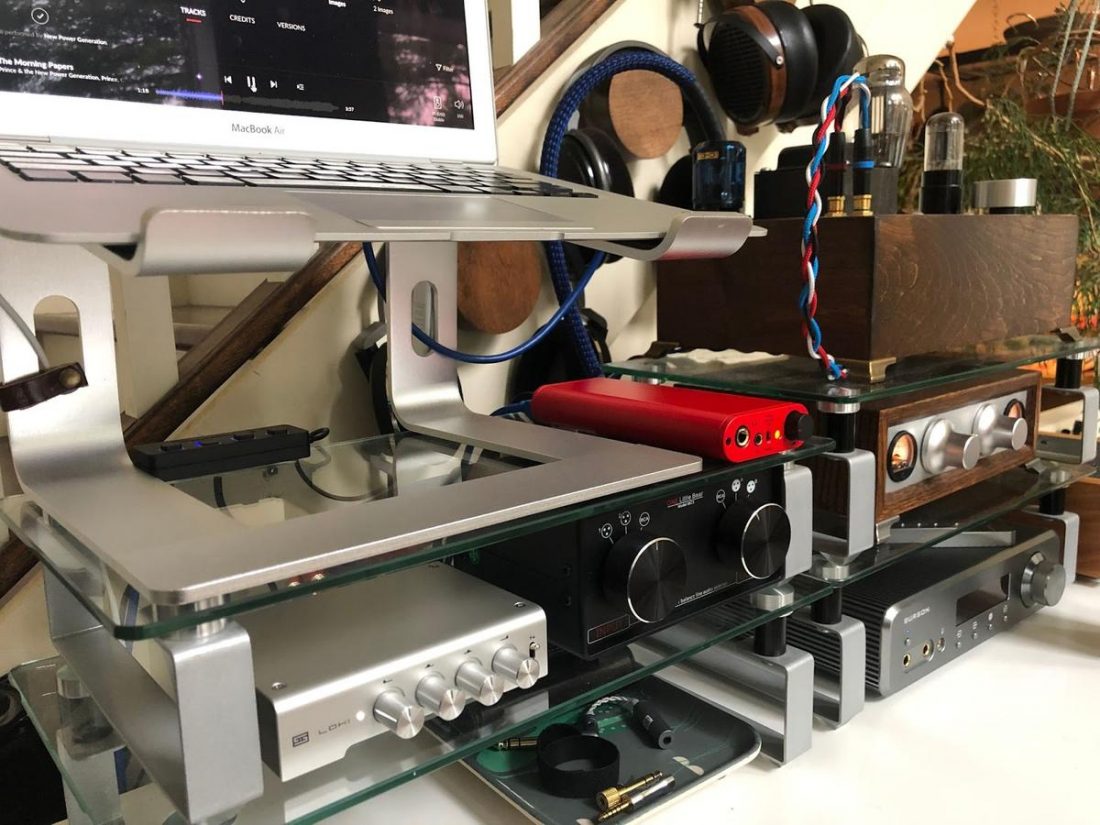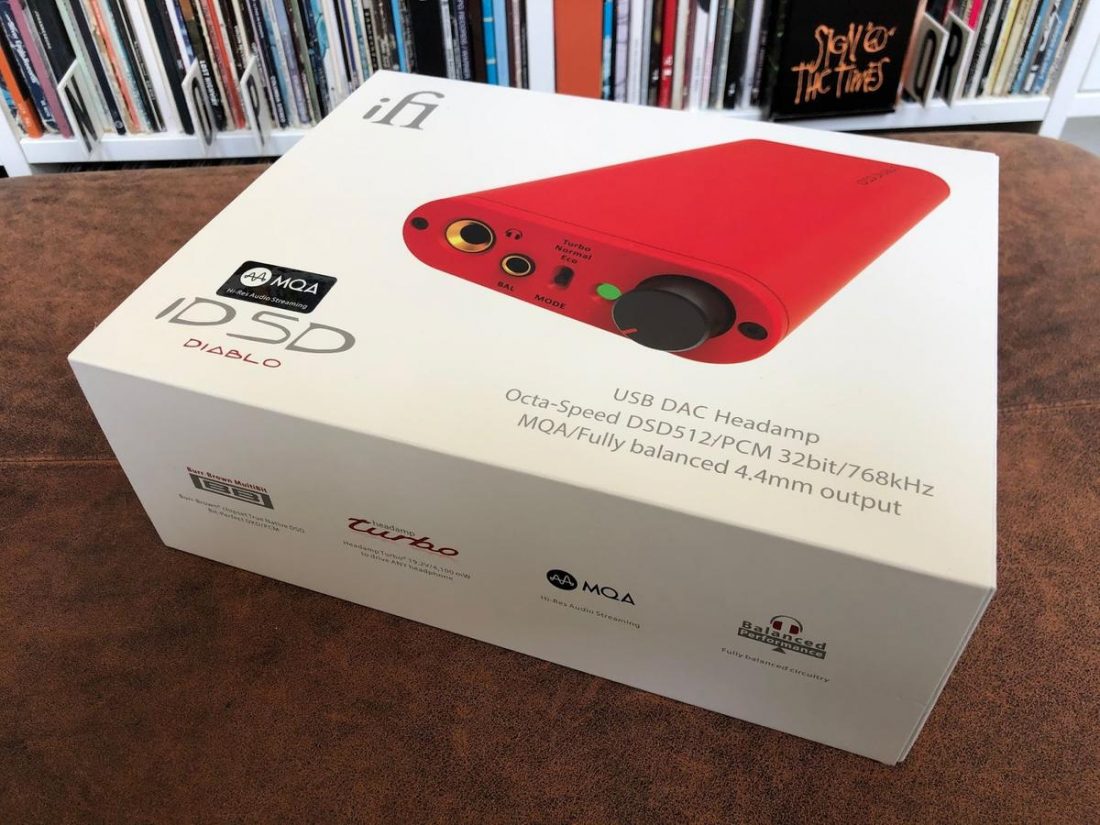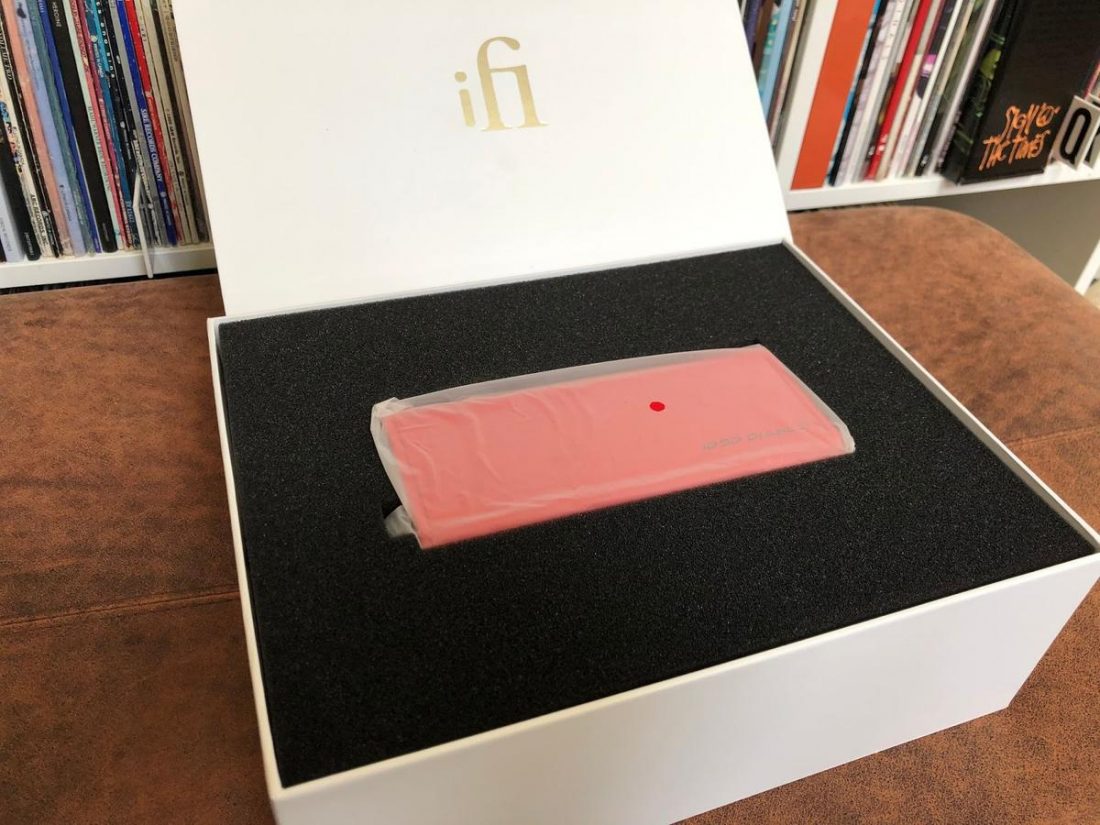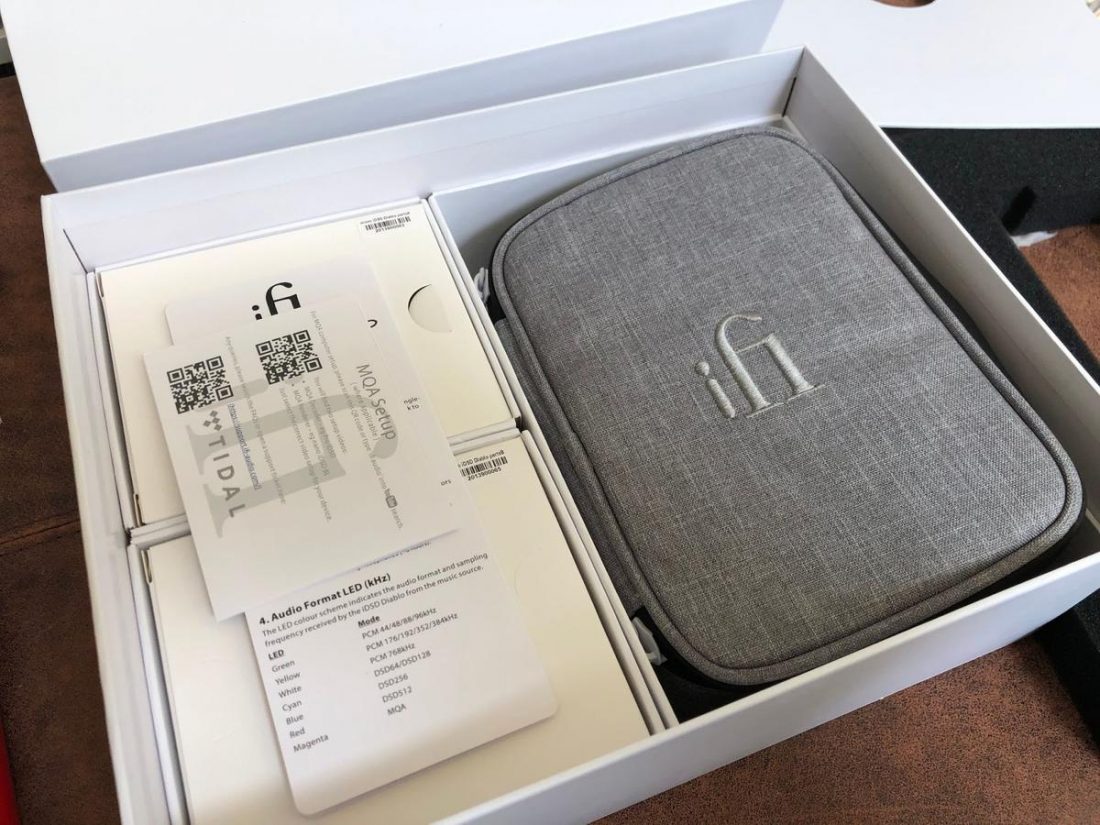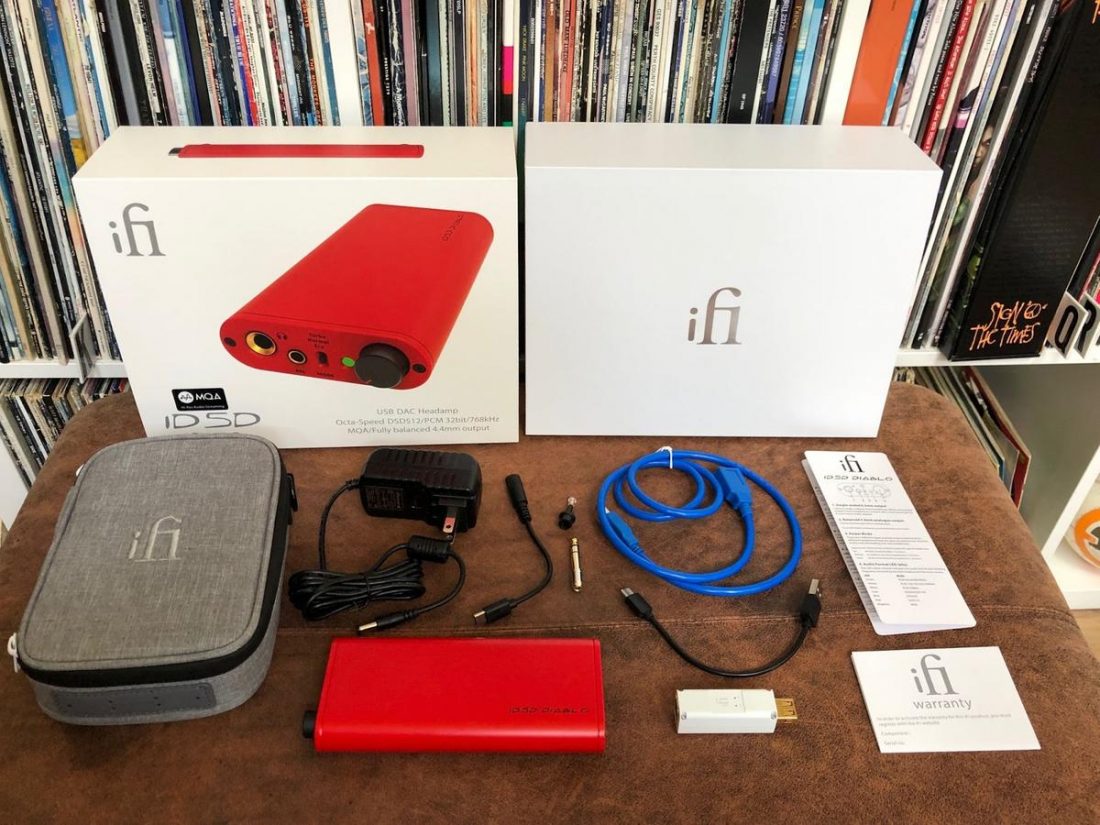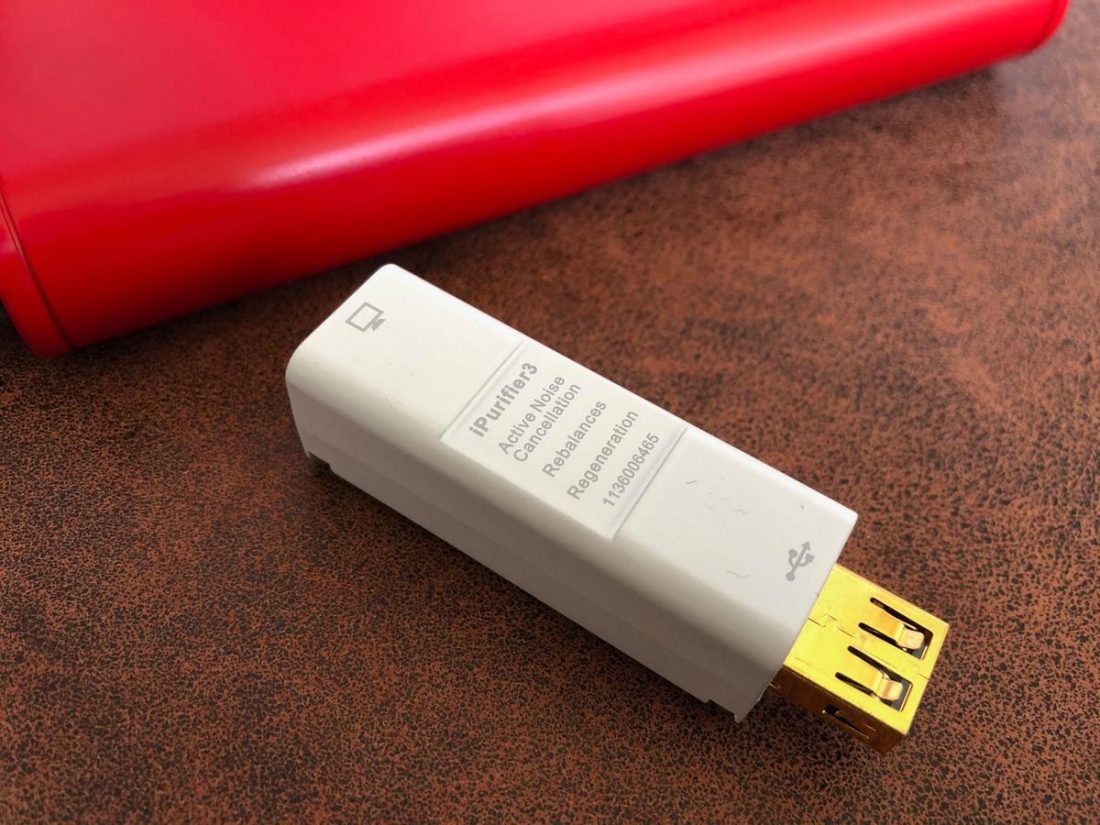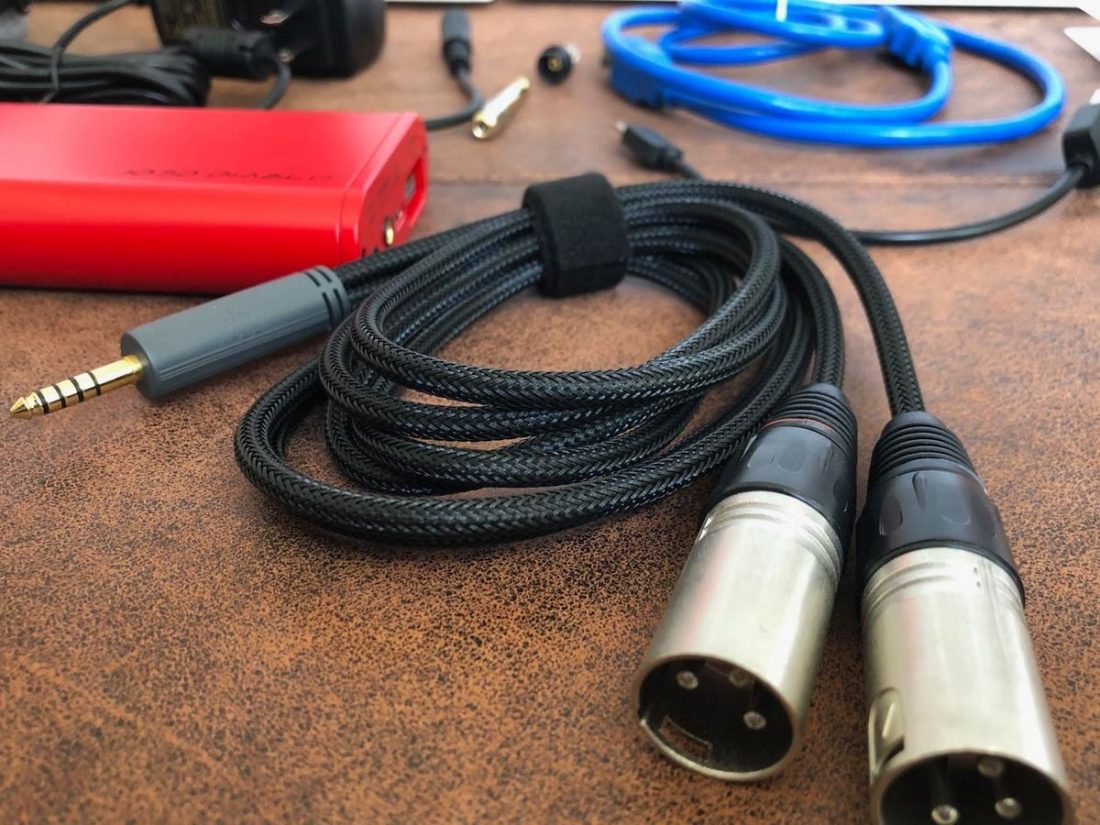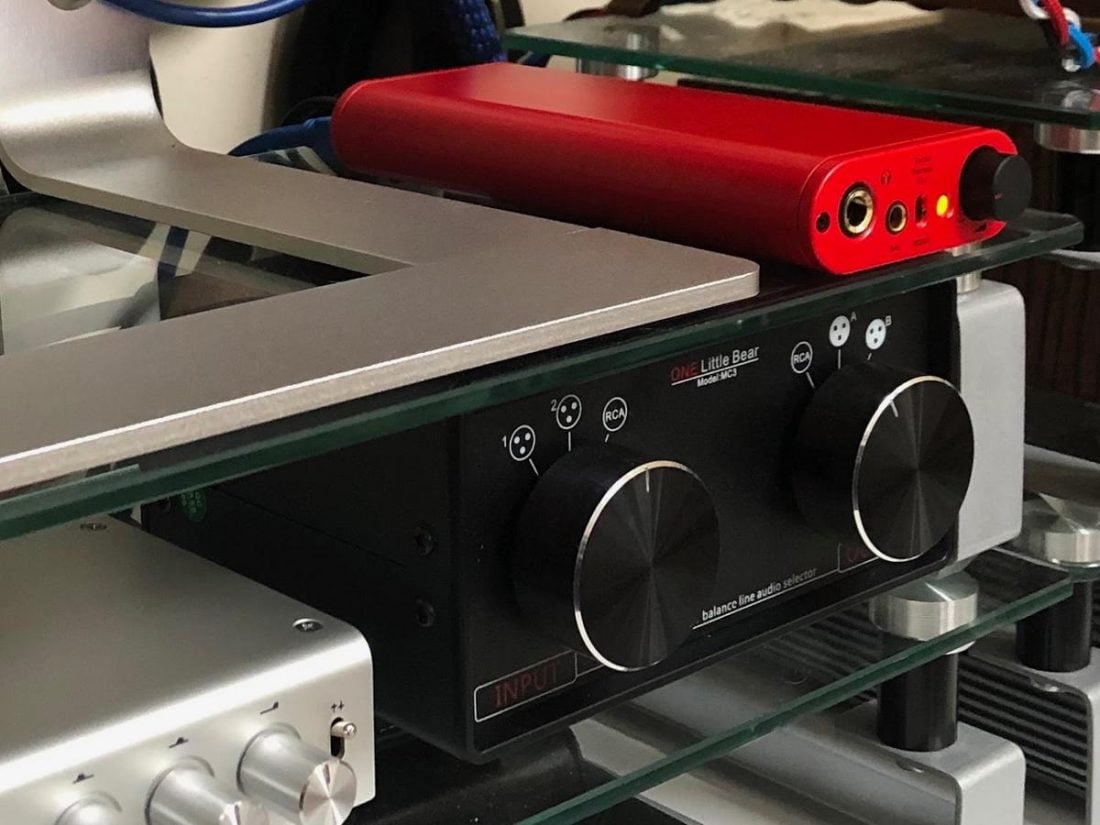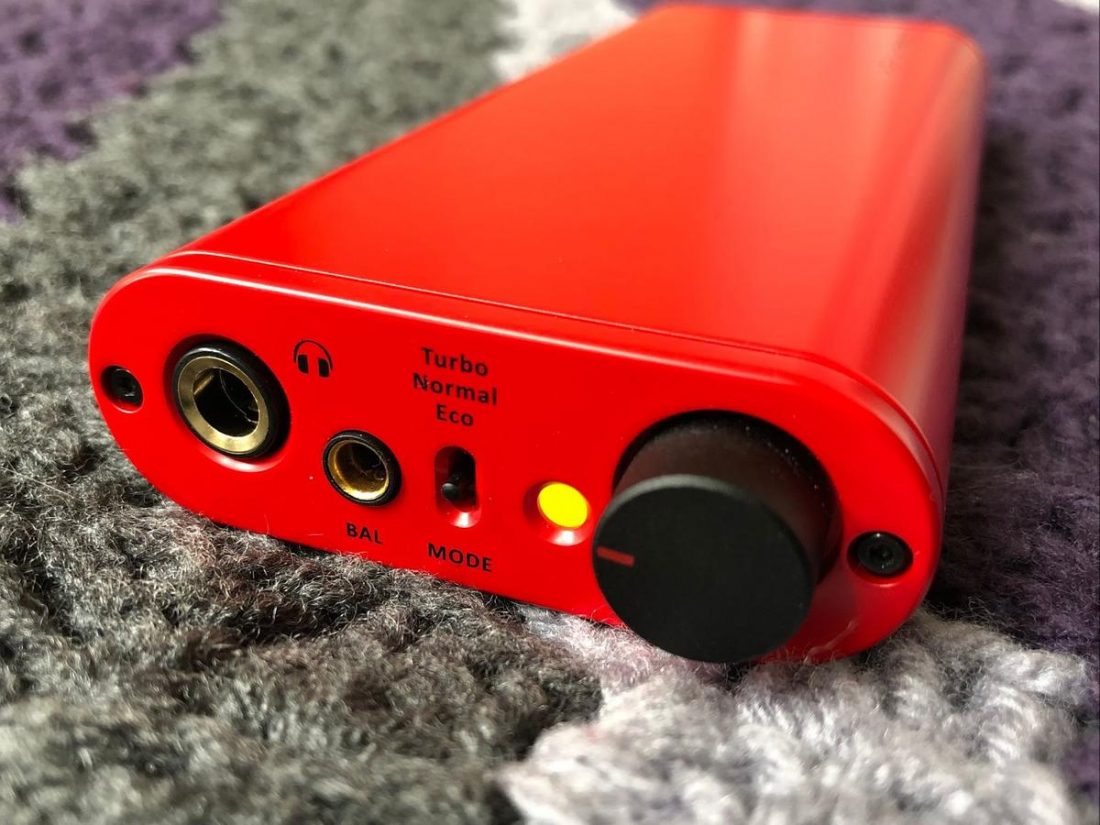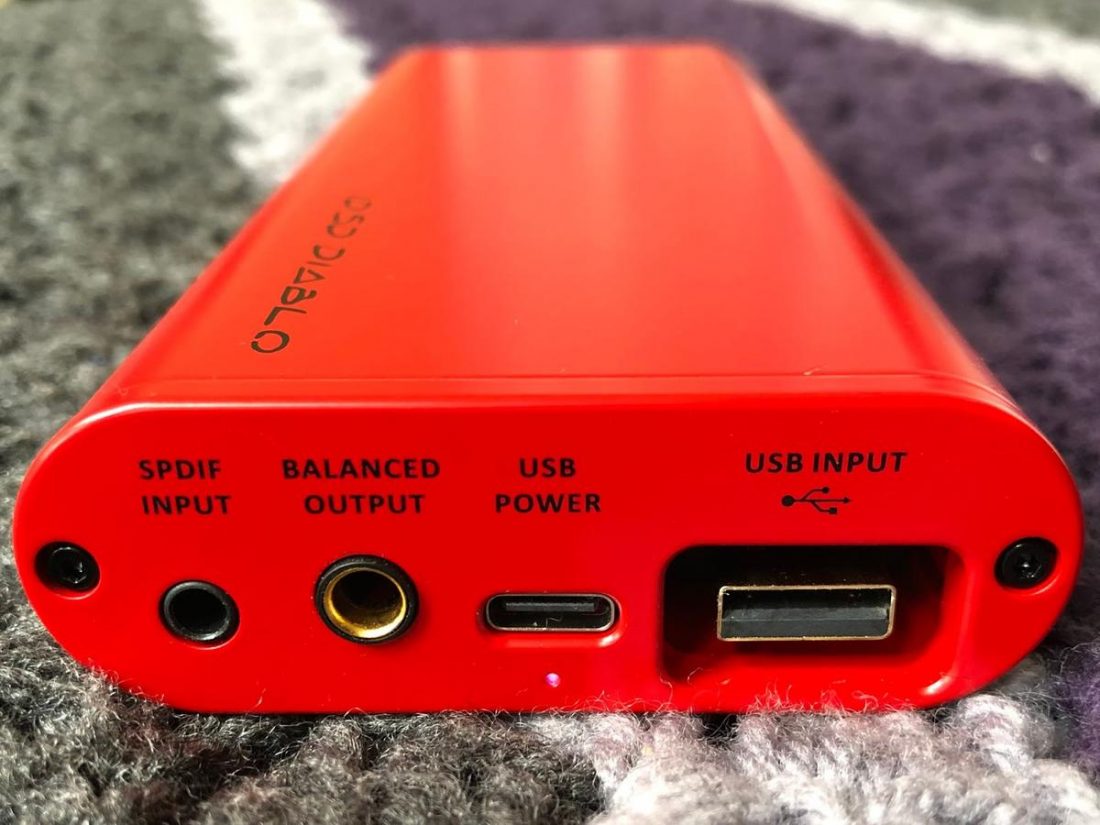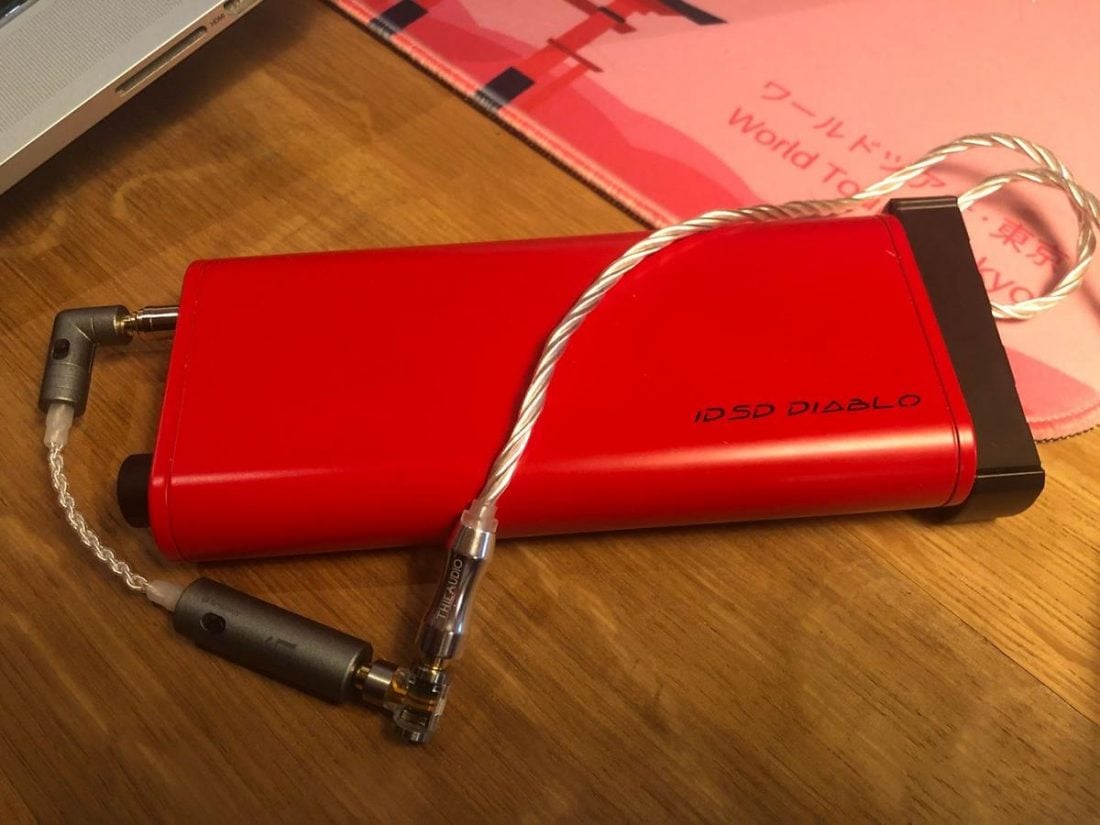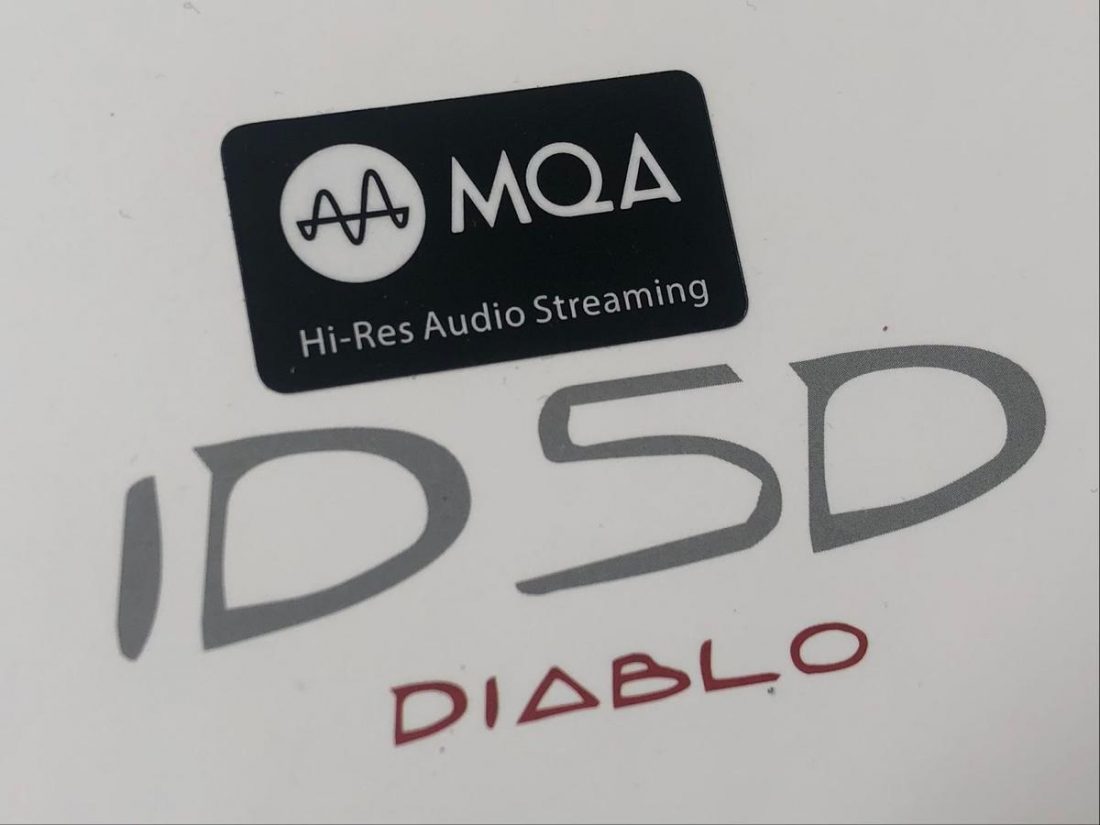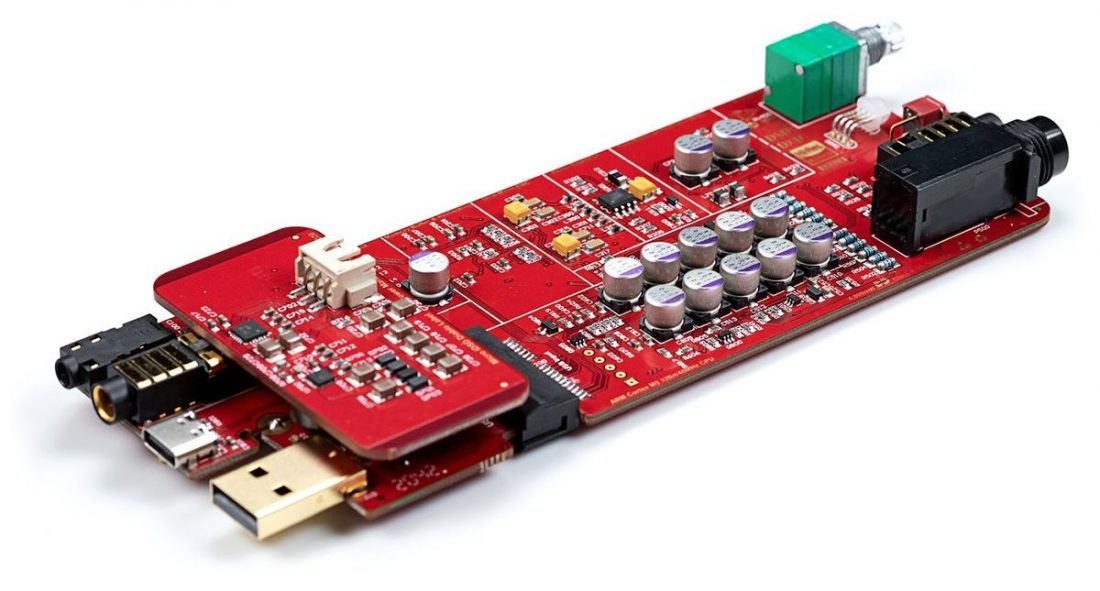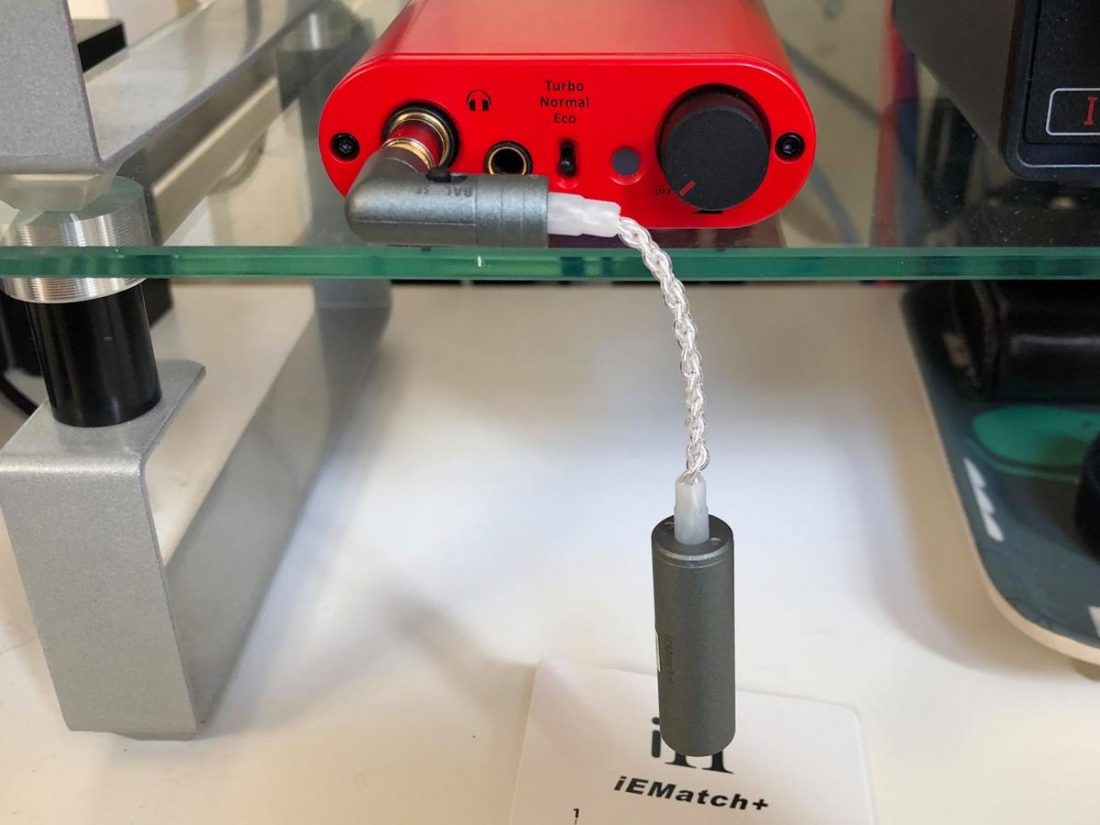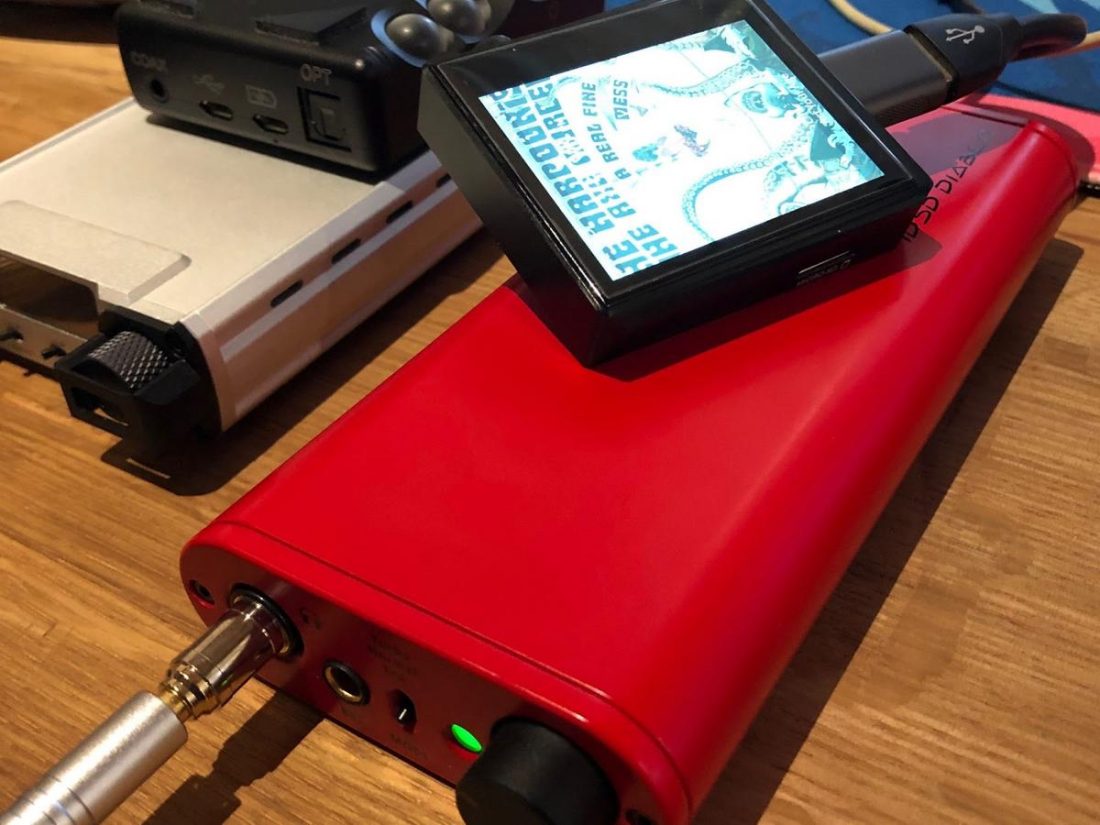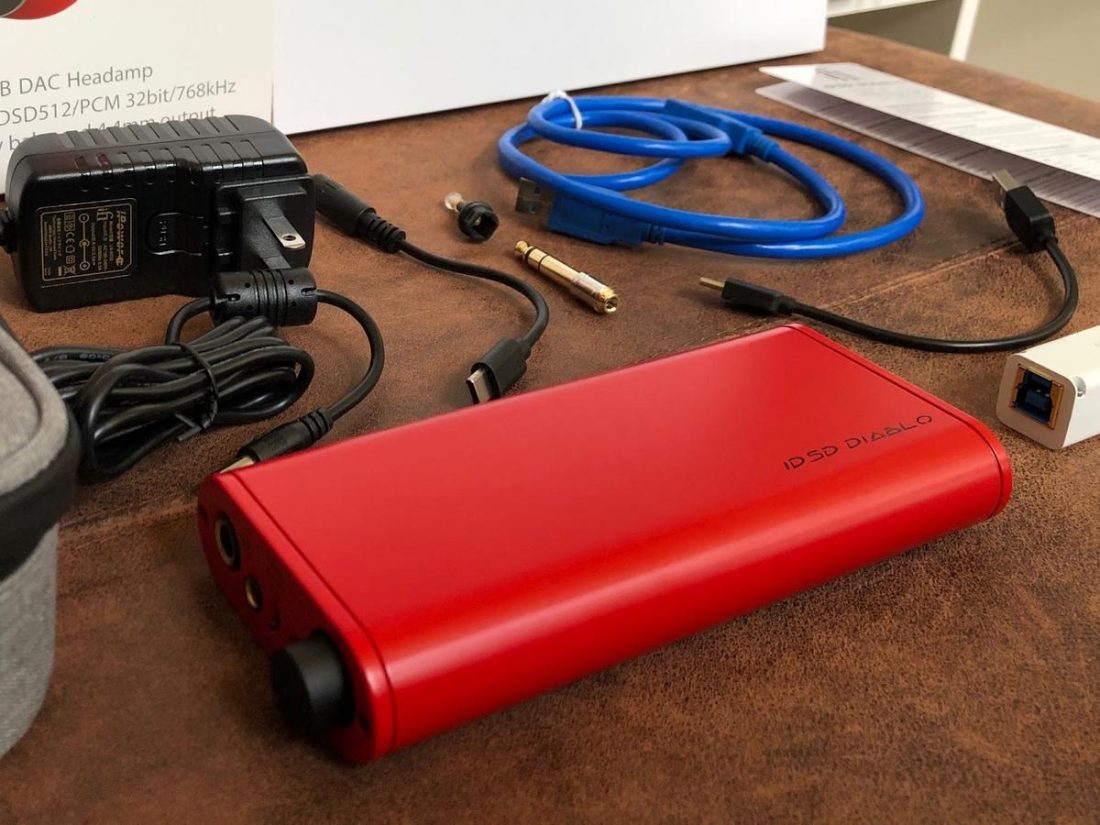I have a riddle for you. What do you get when you mix the incredible performance and namesake of a 90’s era Lamborghini with the sultry presence of Elizabeth Hurley in Bedazzled? A hawt new portable headphone DAC/amp from British company iFi, of course! Yeah. That made about as much sense as the iFi iDSD Diablo did to me at first glance. It is nothing new for iFi to release a great new portable DAC/amp. They are known for producing feature-rich and high-performing mobile devices, primarily in a subdued color palette. With price points on the lower-but-reasonable side of things, iFi devices are typically adorned with rich feature sets, including X-Bass and 3-D+ settings. And then they released the Diablo. With a price tag almost 50% more than their previous top-of-the-line portable model (the micro iDSD Signature), the Diablo lacks X-Bass and 3-D+ features, sports a Ferrari red paint job, and boasts a shockingly high output power (~5W @32Ohms). Suffice to say, the Diablo is something very new for iFi. iFi clearly sees the Diablo as their stripped-down race car model. Unbolt the passenger seats, tear out the interior carpet, and weld in a roll cage, the Diablo is all about undiluted performance and power. iFi’s marketing appears to revel in the car imagery. When I first encountered the Diablo, I just couldn’t wrap my head around it. It’s got the power to drive the most inefficient headphones on the planet properly. And if there is something that those full-sized monster cans aren’t, it’s portable. So why would I want a battery-powered device to pair with them? With 3 settings, you can adjust power and gain to suit your daily driver or track day supercar! Turbo… Normal… Eco… The iDSD Diablo’s focus on pure, unadulterated performance… Formula 1, iFi style.” – iFi Also, quick to be pointed out in most discussions regarding the Diablo, is that it has fewer features than the previous flagship model and is far more expensive. And why is it so, very, very red? Did the Diablo win me over? Is it a ‘big bomb’ (which it physically resembles) or ‘da bomb’? Let’s find out.
Company Overview
iFi audio is an award-winning audio tech company headquartered in Southport, UK. Since launching in 2012, iFi has focused on creating enthusiast-focused audio devices, including desktop and portable DACs, amplifiers, power conditioners, digital and USB noise filters, stereo music systems, and a variety of accessories. iFi oversees the design, development, and manufacture of over 30 products from their UK headquarters and has a US-based distribution center and offices. Parts are sourced from across the globe, including Germany, the USA, and Japan.
Specifications
Form: Portable DAC/amp Digital Inputs: USB 3.0 type ‘A’ (USB2.0 compatible), S-PDIF (3.5mm coaxial/optical) Formats Supported: DSD512/256/128/64, Octa/Quad/Double/Single-Speed DSD, DXD (768/705.6/384/352.8kHz), Double/Single-Speed DXD, PCM (768/705.6/384/352.8/192/176.4/96/88.2/48/44.1 kHz), MQA (Full Decoder) Frequency Response: 10Hz-80kHz(-3dB) SNR Balanced / S-E: -120dB / -114dB Dynamic Range Balanced / S-E: 120dB / 114dB THD + N Balanced / S-E: 0.002% / 0.001% Headphone Max Output Balanced / S-E: >19.2V/611 mW (@ 600 Ohm), >12.6V/4,980 mW (@ 32 Ohm) / >9.6V/153 mW (@ 600 Ohm), >8.8V/2,417 mW (@ 32 Ohm) Fixed Audio Output Balanced: 4.4mm Power consumption Turbo/Normal/Eco: 12W/5W/2W Battery: Lithium-polymer 4800mAh Dimensions: 166 x 72 x 25 mm, 6.5″ x 2.8″x 1.0″ Weight: 330g (0.73 lbs) Warranty period: 12 months
Packaging
The Diablo is packaged in an attractive cardboard sleeve with product photos and specifications prominently displayed. Within the sleeve is a relatively large white box that contains the Diablo securely ensconced in foam. Beneath the Diablo are a couple of nested boxes containing all the accessories.
In the box
Diablo iDSD DAC/amp iFi iPower supply 5V Power Supply to USB-C adapter iFi USB iPurifier3 (included with the first 1000 sold) USB-A to C adapter USB-A male/female cable (blue) 4.4mm Pentaconn to dual 3-pin XLR cable 6.35mm to 3.5mm adapter Optical S/PDIF to 3.5mm adapter iFi iTraveller travel case
Accessories
Counting just the three products that iFi sells separately (USB iPurifier3, iPower supply, and iTraveller case) adds up to more than $200 worth of accessories. In a world where you struggle to find a smartphone with an included power adapter, the plethora of accessories feel genuinely luxurious. I’m not going to delve into an argument regarding the functionality or promised audible improvements that using a product like the USB iPurifier3 or the iPower supply might provide. Just be satisfied that they were in the box with the Diablo. I’m happy to use them, and at worst, I feel they aren’t hindering performance in any noticeable way. The iTraveller case bears special mention, as it’s one of the nicest portable audio cases I’ve encountered. iFi describes it as “a multi-purpose travel case designed specifically for portable DACs,” and it’s (just) roomy enough to squeeze in the Diablo’s prodigious length. The dimensions are 135mm x 190mm x 50mm, and much like the Diablo itself, the case is portable but far from pocketable. The iTraveller includes handy elasticated mesh pockets and removable partitions to keep your audio accessories securely in place. There are slots on the top and bottom to allow pass-through cable egress and a mesh pocket on the back to hold your smartphone or DAP. Made of grey water-resistant fabric and embroidered with the iFi logo, the iTraveller is discreet, classy, and attractive. The Diablo also includes an unusual output cable, a 4.4mm Pentaconn to dual 3-pin XLR to support balanced analog audio output. It’s worth noting that the Diablo has no analog inputs nor single-ended output. I recently purchased the Little Bear MC3 balanced input/output switch box, which provides three inputs and outputs (2 balanced plus a single SE). It is so useful because it passively converts a balanced signal to a pair of single-ended RCA sockets. It’s a great and inexpensive option for using a balanced-only DAC (like the Diablo) with amplifiers featuring only single-ended inputs. I’m all about flexible solutions to resolve system incompatibilities. A surprising omission from the generous list of included accessories is the iFi iEMatch+. This handy little gizmo is designed to “connect between your headphones/iEMs and the output… to simply and instantly improve playback…” by providing up to 24dB of noise reduction (with 0% frequency loss) to ensure a safe and comfortable listening level with sensitive IEMs and powerful amplifiers. It seems like an obvious slam dunk for the portable powerhouse Diablo.
Design
Let’s address the tomato in the room. The Diablo is RED. Did the name or the color come first? iFi is mum on the subject. The sturdy aluminum-cased Diablo has round sides (somewhat similar to the hip-dac silhouette), unlike the angular designs of most of their previous portable DAC/amps. With the uniquely shaped Zen and NEO iDSD recently added to the lineup, iFi is apparently experimenting with product design. Their lineup is no longer immediately recognizable as belonging to the same manufacturer. There are some hits and misses in there, with the NEO decidedly a design standout and the Diablo falling somewhere mid-pack. The front face has two headphone outputs (6.35mm SE and 4.4mm balanced), a 3-position gain switch (Turbo, Normal, Eco), a large but subdued indicator LED, and a combined power/volume knob.
LED indicator
The rear face has iFi’s standard recessed male USB-A data input socket (that allows for easy compatibility with the Apple Camera Kit), USB-C power/charging socket, tiny charging status LED, 4.4mm Pentaconn balanced analog output, and 3.5mm S/PDIF digital input. Display? Nope. Single-ended analog outputs? Uh-uh. Analog input? Yeah, no. Rubber feet on the bottom? Fine, you can have four.
Internals
Like any good, err… evil demon, the Diablo is purposely deceitful. The simple exterior obscures hidden depth and complexity. While this may sound like a summary of questionable dating decisions, the devilish Diablo turns out to be beautiful inside. As the old adage goes, ‘it’s all about the music.’ The Diablo walks the talk. iFi goes to great lengths to assure potential purchasers that all decisions were purposely made in the Diablo’s design to maximize the highest quality of music reproduction. The Diablo is a purist’s device, and the race car driver doesn’t lament the lack of air conditioning to maximize performance. The Diablo uses dual Burr-Brown DAC chips mated to a new 16-core XMOS chip to handle bit-perfect decoding up to PCM 768, DSD 512, and 2xDXD. iFi has jumped with both feet into MQA support and created the optional GTO digital filter (changeable via firmware updates) in conjunction with the MQA team. The GTO filter measures almost identically to the proprietary MQA one. After trying both available filters, I find I prefer the sound of the standard Firmware 7.0 – MQA / DSD256 (Cookies & Cream) filter. The following testing and listening impressions are all based on this firmware with the Diablo. iFi calls their new, balanced, symmetrical dual-mono circuit design PureWave. It focuses on short, direct signal paths to achieve “exceptional linearity and infinitesimally low levels of noise and distortion.” OptimaLoop is their name for employing multiple optimized negative feedback loops in the amplifier circuit to more accurately control gain and further reduce distortion. Additional topology enhancements include employing DirectDrive (no coupling capacitor design), MOSFET muting via micro-controller, jitter reduction via a GMT (Global Master Timing) femto-precision clock, TDK C0G (Class 1 ceramic) capacitors, Panasonic OS-CON capacitors, muRata capacitors, and Vishay MELF resistors. With a maximum power rated at 32Ohms of 4.98W (balanced) and 2.5W (single-ended), the Diablo is in a class of its own as far as portable amplifiers. Heck, it puts most desktop devices to shame (I’m looking askance at you iFi NEO iDSD). Do you have super-demanding, power-hungry, inefficient, and high-impedance full-sized cans that scoff at portable amplifiers? Do you wish you could listen to them in all their glory at the grocery store? The Diablo is the answer to your dark prayers. You can lay off the midnight chanting, pentagon drawing, and small creature sacrificing because iFi has delivered the goods.
iFi iDSD Diablo Sound
Since this is a portable device, I started my testing using highly efficient IEMs. As expected, pairing the Diablo with the Thieaudio Monarch IEMs, even on the lowest gain setting (Eco), there is almost no usable range on the volume control. From silent to way-too-loud in only a few degrees of turn. No great surprise. I splurged and ordered the iFi iEMatch+ device to see if it delivers on its promise of significant volume reduction without a noticeable impact on sound reproduction. It turns out, my initial thought that this should be included with the Diablo was right on the nose, and I highly suggest anyone purchasing a Diablo to add one of these little adapters to their order as well. With the iEMatch+ switch on the Ultra setting and the Diablo set to Normal gain, the Monarch have about a half-turn of usable volume range. Far more tailorable and with much less chance of catastrophic IEM or eardrum damage due to unwanted gain changes or accidental volume knob manipulation. As far as how the Monarch sound with the Diablo? Superb. The Diablo delivers a silent background, extraordinary dynamics, and a very impactful yet clean sound. It’s energetic and immaculate sounding without being sterile or dry. And all these admirable qualities apply to any pair of headphones I tried with the Diablo. From the humble Koss KPH30i, to the luxurious Ultrasone Edition 15 Veritas (and many in between), the Diablo drives them all to their potential best. iFi incorporated some internal trickery to make the Diablo work properly with difficult to drive headphones such as planar magnetics. Folks often mistakenly believe that lower-powered amplifiers will properly drive planars due to their fairly low impedance and higher sensitivity ratings, but planars need power for proper playback and control. In fact, the Diablo has taken over desktop solid-state amplification duties for me. I’ve found myself auditioning several solid-state desktop amplifiers lately and being discouraged by one aspect or another. The output power, price, or design compromises always seem to keep me from finding the right one for my wants and needs. When the Diablo arrived, I didn’t even consider it as a desktop amp contender. Obviously, it’s portable, that’s why it’s got a battery! But after auditioning the Diablo, I found my desktop powerhouse in a small (for a desktop device) red package. Properly delivered power yields a muscularity to the Diablo’s sound and allows for control and outstanding definition when reproducing the entire sound spectrum. This is especially evident in bass layering and definition. Transients are delivered effortlessly, and the Diablo has a similarly energetic yet well-mannered sound that better desktop setups can provide. The DAC and amplifier synergy is clear, with neither side of the combo detracting from the other. Unlike with the NEO, iFi got the balance right with the Diablo. This is an excellent, smooth-sounding DAC mated to abundant, clean, and controlled power. The Burr-Brown DAC is on the warmer and less clinical side of things than most ESS Sabre chipset-based implementations. Using the balanced analog outputs to feed an external amplifier, the DAC section of the Diablo proves to be no slouch, even without the impressive internal amp backing it up. Beyond a massive power increase, I didn’t find any notable differences in sound quality between the single-ended and balanced outputs. Both sound excellent.
Where to Buy
Conclusion
Does power corrupt, or (as Spidey says) does it just bestow responsibility? While iFi saddled their latest creation with the Diablo moniker, it seems they accepted their sonic responsibilities with reverence. No, they didn’t make the audio equivalent of the King of Darkness. Instead, they released a refined and (dare I say) angelic sounding device. Since it’s painted the color of Liz Hurley’s outfits in Bedazzled and packs the horsepower of a Dodge Demon muscle car, the Diablo is iFi’s most loud and proud product they’ve ever produced. It’s far too cumbersome for a pocket, entirely overpowered for sensitive IEMs, and is targeted to compete with the best portable audio products in the world. And, at first, I struggled to understand its intended market and purpose. In the end, the Diablo didn’t care if I understood it. Much like a stripped-down racecar, it’s not for everyone. Still, for those who can appreciate its rare combination of phenomenal power and a lean performance-oriented feature set, the Diablo is uniquely positioned. It took a while, but finally, I got it. The Diablo is unapologetically big, red, and powerful (I’m getting Hellboy flashbacks). It’s expensive, and it doesn’t have the feature set of iFi’s lesser models. But it sounds phenomenal. Take it or leave it. I’ll take it.

